

Adobe describes InDesign as the “industry-leading page design and layout tool” for both print and digital. Despite its industry leading status, learning how to use InDesign needn’t be as hard as you think.
Adobe InDesign is an industry-level tool for professional graphic designers to create single or multiple page documents. We’re talking brochures, eBooks (including designing book covers), interactive PDFs, magazines (including digital), flyers. It offers similar functions to software such as LucidPress (read our review), though includes many more features.
If you — a newcomer to print design — are wanting to create these documents to a professional level, InDesign is the option you’re looking for. Not Photoshop or Illustrator.
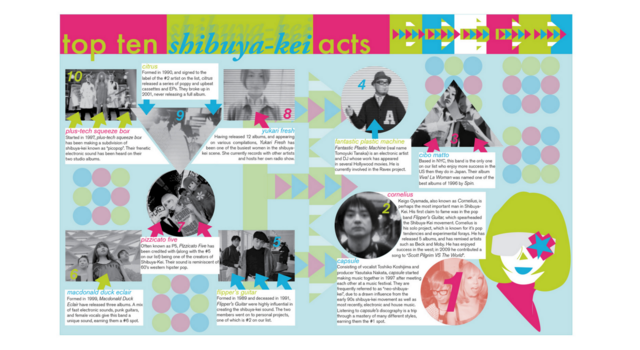
Photoshop’s primary use is to edit raster art. That is, images constructed of pixels (i.e. photos). You can find out how to learn Photoshop here.
Illustrator (teach yourself) edits vector art. That is, images and elements constructed of points, lines, and shapes (i.e. logos). These elements can be scaled without loss of fidelity.
InDesign, on the other hand, is where you bring all of these elements — raster art, vector graphics, typography — together to create a polished document that’s ready for print.
There are a number of reasons why you’d choose to use InDesign over alternatives, including Photoshop and Illustrator.
Adobe’s InDesign CC video tutorials cover all the basics you’ll need to get started. As you progress, these videos will help you get to a pretty advanced level.
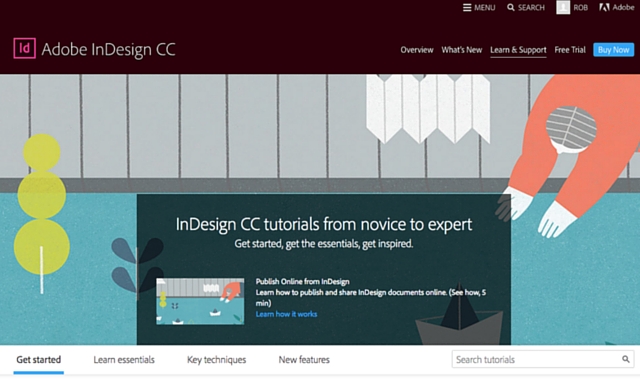
Within the Get Started section, you’ll quickly get to know where to find things in InDesign, and what the program can actually do. From there, advance to the Learn Essentials area which delves into each area in more detail.
Once those novice steps are mastered, the Key Techniques and some of the videos in the New Features sections will see you rapidly become an expert.
If you’re using InDesign CS5, Adobe has a separate, free course for that.
This detailed article from Lisa Valuyskaya in Smashing Magazine goes through 10 tips she wished she’d known before starting to use the program.
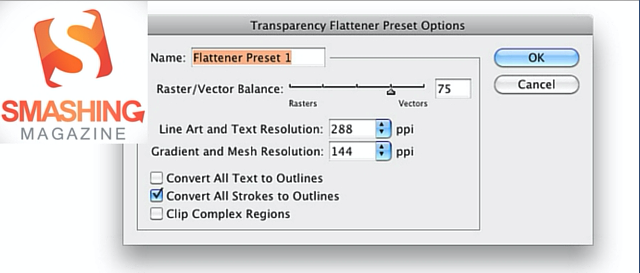
This covers understanding margins and bleeds, image formats, and working with color, among others.
These 13 videos on TrainingTutorials101 are taken from the full, 19-hour-long Lynda course (you have to sign up for a paid, monthly account to access the remaining lessons). The first video, below, shows you what’s in store for you:
Despite this not being a complete set of videos, the content offers a great primer for getting to grips with navigating InDesign. You’ll also learn a host of InDesign “secrets” to help you save time while designing.
The huge selection of in-depth tutorials from Tuts+ makes this one of my favorite places to discover new ways to use InDesign.
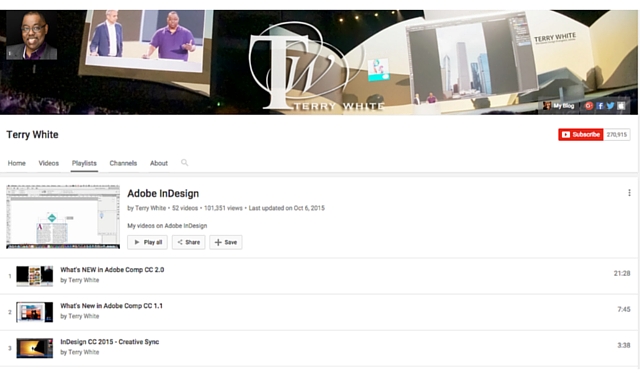
Whether you want to create a vintage, clothbound book cover, or create a cool typography poster, these step-by-step tutorials will show you exactly how.
Although this isn’t a structured course, Terry White’s YouTube videos on InDesign have helped over 100,000 beginners start making the most of InDesign.

The videos are tailored for CS5, CS6 and CC, with the vast majority of lessons being relevant for each version of the software.
Some lessons include How to Get Started With InDesign CC, Publishing from InDesign to iPad, and How To Create a Fixed Layout Ebook, along with around 50 other lessons.
InDesign Secrets is a massively comprehensive online resource for all things InDesign. Once you’ve got the basics nailed, this site should become your new best friend. It’s the guys behind this site that put together the InDesign Training For Beginners Course, mentioned above.
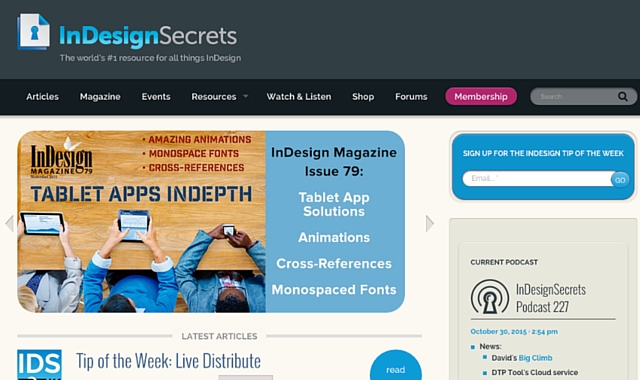
You’ll find thousands of articles, InDesign templates, podcasts, video casts, and an active forum to have your questions answered.
This site focuses on all things Adobe. Though new articles are published very sparingly, head over to the InDesign section of Layers, and you’ll find a treasure trove of wisdom. This library of articles covers topics from the very basics, to the very advanced.

Some of their more detailed articles and videos act as independent tutorials to teach you a whole new aspect of the program. For example:
Above are the top free courses and resources we’ve found. There are some fantastic paid-for courses, too.
I’m currently in the midst of teaching myself InDesign with no prior experience. These are the free resources, along with scouring Pinterest for InDesign tutorials, that have helped me most, and I hope they can help you, too.
Which other free online resources are you using to teach yourself Adobe InDesign? And are you finding the learning process easy going?
Image Credits: Office Woman Gets Annoyed by racorn via Shutterstock, Magazine Spread by Alex Von Dorp (Flickr)




 How To Spend GTA V PC Pre-order Bonus ($1M Online, $500K Story): Buy 200K Apartment With 10 Car Garage & More
How To Spend GTA V PC Pre-order Bonus ($1M Online, $500K Story): Buy 200K Apartment With 10 Car Garage & More Call of Juarez: The Cartel Walkthrough
Call of Juarez: The Cartel Walkthrough The Walking Dead — Episode Two: Starved For Help Walkthrough
The Walking Dead — Episode Two: Starved For Help Walkthrough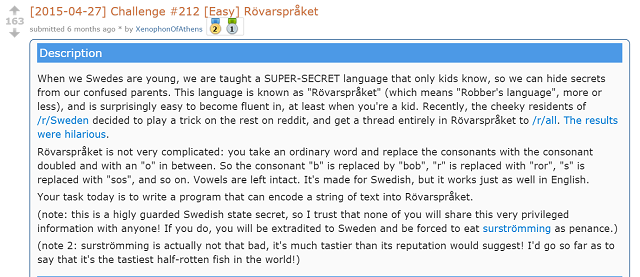 4 Reasons Why You Shouldn't Learn to Code from Codecademy
4 Reasons Why You Shouldn't Learn to Code from Codecademy Infamous 2 Festival of Blood DLC Walkthrough
Infamous 2 Festival of Blood DLC Walkthrough